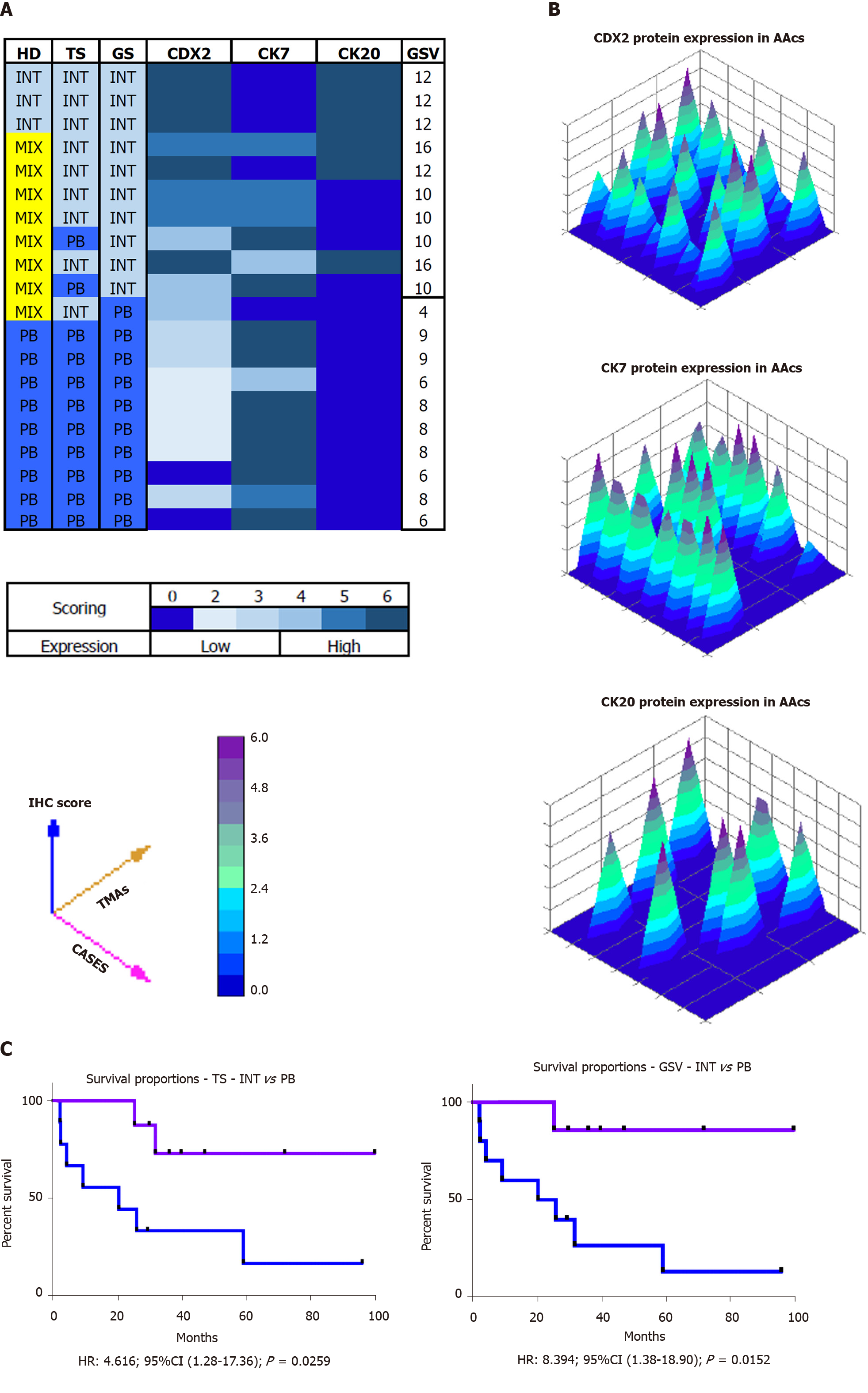Copyright
©The Author(s) 2020.
World J Gastroenterol. Nov 21, 2020; 26(43): 6822-6836
Published online Nov 21, 2020. doi: 10.3748/wjg.v26.i43.6822
Published online Nov 21, 2020. doi: 10.3748/wjg.v26.i43.6822
Figure 5 Results elaborating the computerized analyses.
A: Classification according to the three different data sets obtained: Histology, Total score and Global score; B: 3D representation of immunohistochemical analyses of all samples; C: Kaplan–Meier curves of INTestinal vs Pancreato-Biliary according the molecular partition by Total score (above) or Global Score (below). IHC: Immunohistochemical; TS: Total score; Intestinal; PB: Pancreato-Biliary; AACs: Ampullary adenocarcinomas; TMA: Three tissue microarrays; INT: Intestinal.
- Citation: Palmeri M, Funel N, Di Franco G, Furbetta N, Gianardi D, Guadagni S, Bianchini M, Pollina LE, Ricci C, Del Chiaro M, Di Candio G, Morelli L. Tissue microarray-chip featuring computerized immunophenotypical characterization more accurately subtypes ampullary adenocarcinoma than routine histology. World J Gastroenterol 2020; 26(43): 6822-6836
- URL: https://www.wjgnet.com/1007-9327/full/v26/i43/6822.htm
- DOI: https://dx.doi.org/10.3748/wjg.v26.i43.6822









